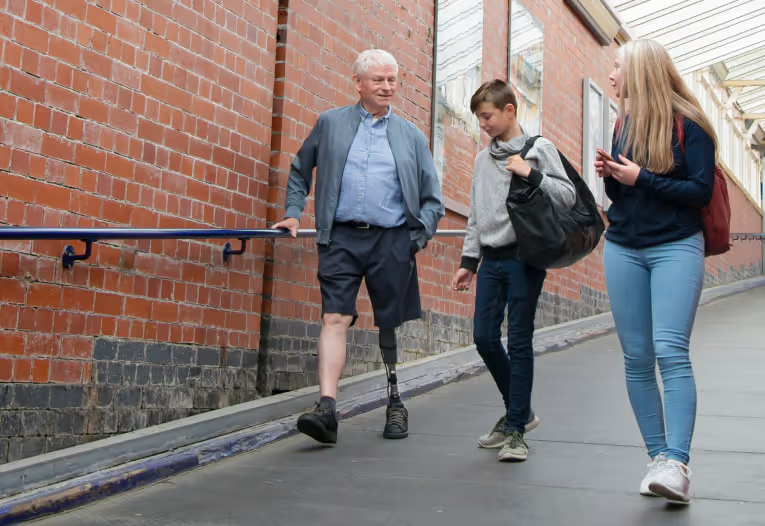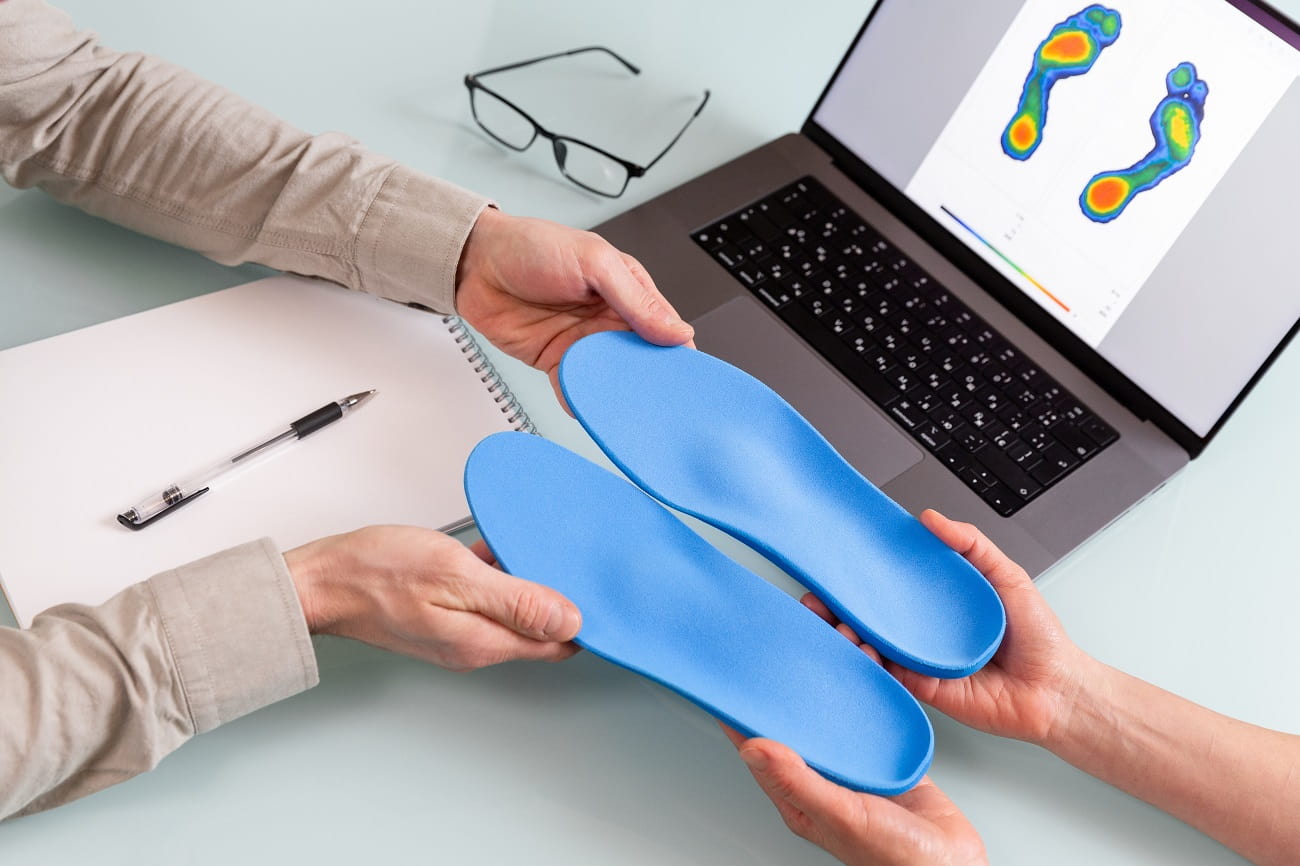Although there is often confusion among the public, orthotics and prosthetics are two distinct types of devices with different designs and functions.
While an expert can promptly determine whether a patient needs a prosthetic or orthotic device, patients may have a different level of familiarity or understanding - which is why we've published this guide.
There are some key things to remember when differentiating between custom orthotics and prosthetics. The following information can help you understand prosthetics vs orthotics and the benefits these devices offer before seeking PrimeCare's prosthetics solutions in Albuquerque & Las Cruces.
Orthotics 101: Types and Uses

Orthotics are medical devices designed to provide support, correct alignment, decrease inflammation, and improve the function of various parts of a person's body, primarily the feet, ankles, knees, hips, and spine.
They can be custom-made or off-the-shelf and are often prescribed by a healthcare professional, such as a physician, podiatrist, or physical therapist.
Types of Orthotics
Orthotics come in various types, each designed to support and correct different body parts. The most common ones include AFO (ankle-foot orthoses), spinal orthoses, and KAFO braces (knee-ankle-foot braces).
Orthotic Uses
Orthotics treat certain conditions, including foot pain, plantar fasciitis, flat feet, high arches, ankle instability, knee pain, hip pain, scoliosis, and other similar conditions.
They come in different shapes and sizes and are made from various materials, such as foam, plastic, and metal. Orthotic devices, such as knee or back braces or foot orthoses, can be worn inside a shoe or as a standalone device.
Spinal orthoses can be worn over or under clothing, depending on the type and design of the orthosis and the wearer's preferences.
Prosthetics 101: Types and Uses

Prosthetics are artificial limbs and devices that replace a missing body part, such as a limb, hand, foot, or other body part. They are designed to help restore the function and appearance of the missing body part, allowing the individual to perform daily activities, move more freely, and improve their quality of life. Prosthetics can be functional, cosmetic, or both.
Types of Prosthetics
Several different types of prosthetics are available, each designed to replace a specific missing body part. Some of the most common types include upper limb prosthetics, above-the-knee prosthetics, below-the-knee prosthetics, lower extremity prosthetics, partial foot amputation prostheses, and transhumeral prostheses.
Prosthetic Uses
Prosthetics are used to replace missing or damaged body parts, helping individuals to regain function and mobility. They can be used for various reasons, such as limb loss due to injury, illness, or congenital conditions.
With advances in technology and materials, prosthetic devices are becoming more sophisticated and personalized, allowing for a greater range of motion, comfort, and natural appearance.
Prosthetic vs. Orthotic Similarities
- Orthotics and prosthetics are medical devices designed to improve mobility and quality of life for individuals with physical limitations or impairments.
- They can be custom-made to fit the individual's body, ensuring comfort and optimal function.
- They replace or support missing or damaged body parts, such as limbs or joints.
- Both types of devices can be designed to be functional, cosmetic, or both, depending on the individual's needs and preferences.
- They are made from various materials, including plastics, metals, and carbon fiber are durable, safe, and long-lasting.
- Prosthetics and orthotics require proper fitting, adjustment, and maintenance to ensure optimal function and comfort.
- Finally, orthotics and prosthetics can significantly impact the individual's quality of life, helping them regain independence, mobility, and a sense of normalcy.
Orthosis vs. Prosthesis Differences
The main difference between a custom-made orthosis and a prosthesis is that an orthosis support enhances or protects an existing body part. In contrast, a prosthesis replaces a missing body part.
Furthermore, The manufacturing process and healthcare specialists specializing in these devices differ.
Orthotic vs. Prosthetic Manufacturing Process
The manufacturing process for orthotic and prosthetic devices varies significantly. Creating orthotics involves evaluating the patient's needs, designing a custom device, creating a mold, and fabricating the device using materials like plastic, carbon fiber, or metal.
For prosthetics, we create a negative cast of the missing limb or body, which produces a positive mold of the patient's anatomy. The prosthetic device is then fabricated from carbon fiber or plastic, according to this mold.
Both orthotic and prosthetic devices are custom-made to meet each patient's unique needs and help improve their mobility and quality of life.
Orthotist vs. Prosthetist
While both professions use custom-made devices to improve patient mobility and function, orthotics and prosthetists work with different patient populations and focus on different body parts.
Orthotists work with patients with musculoskeletal or neurological disorders, while prosthetists work with patients who have lost a limb or body part.
Understanding the difference between the two professions is vital for patients to ensure they receive the appropriate care and treatment for their specific needs.
Summary: Get Professional Advice
Individuals with specific medical conditions such as diabetes face an increased risk of limb loss, making it imperative to seek guidance and advice from professional prosthetists or orthotics on amputation prevention and devices and rehabilitation, such as physical therapy.
Even prolonged periods spent standing or walking can lead to loss of sensation in the limbs, which appropriate orthotics can relieve. Or perhaps, you or a loved one require a prosthetic device or want a second opinion.
Regardless, PrimeCare's dedicated healthcare specialists in Albuquerque and LAs Cruces are here to help you find the best solution. Request a free consultation and learn more about our orthotic and prosthetic services.

.svg)
.svg)









